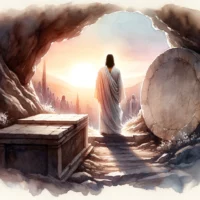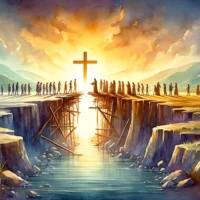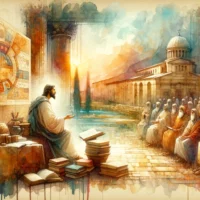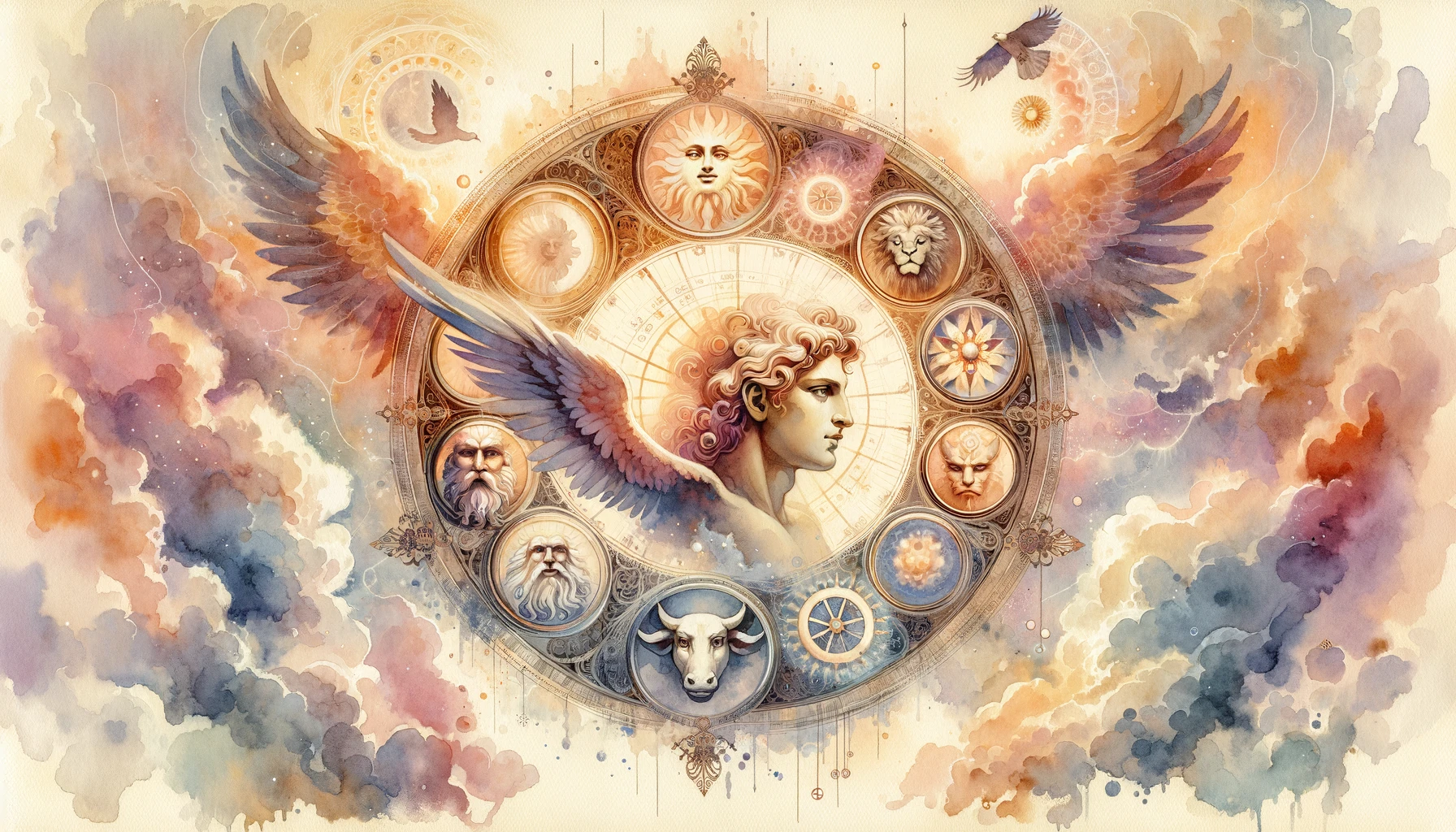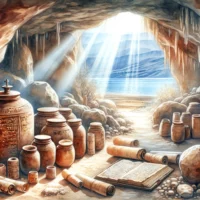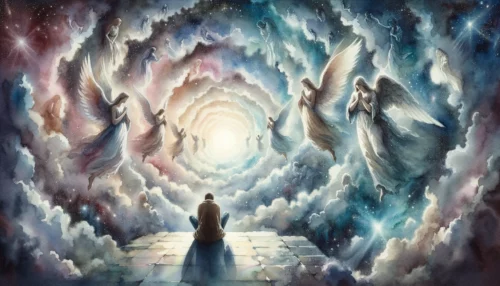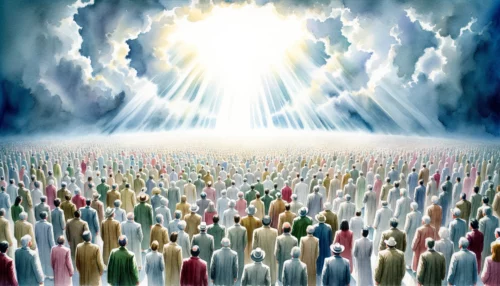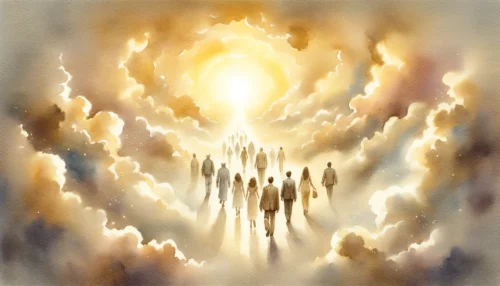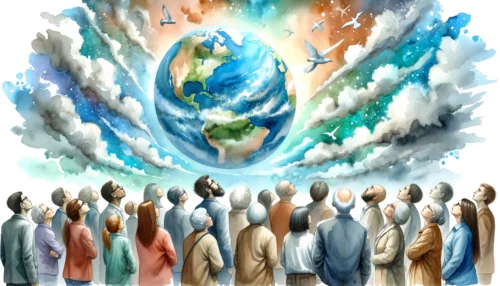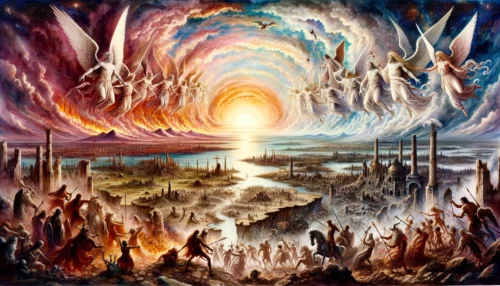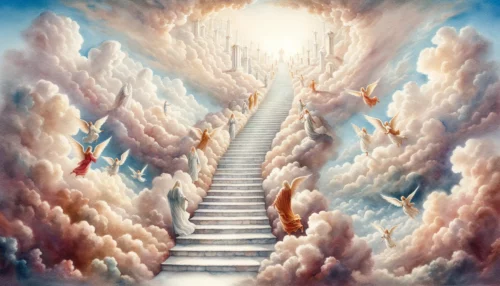Cherubim are often shrouded in mystery, sparking curiosity among believers and scholars alike. These spiritual entities appear at critical junctures in the Bible, guarding the entrance to Eden and overshadowing the mercy seat of the Ark of the Covenant. But beyond their role as divine sentinels, what do cherubim symbolize in Christian theology? How do their appearances throughout scripture inform our understanding of God’s character and the structure of the heavenly realm? This exploration seeks to shed light on these questions, offering insights into the cherubim’s nature, their significance in the biblical narrative, and their impact on Christian thought.
Cherubim in Biblical Narratives
Cherubim emerge within biblical narratives not as mere background characters but as pivotal figures that underscore key theological themes and moments in salvation history. Their appearances, though not frequent, are strategically placed to signal moments of profound significance regarding God’s presence, judgment, and mercy.
One of the earliest mentions of cherubim is in the context of the Garden of Eden. After the fall of Adam and Eve, God placed cherubim to the east of the garden, along with a flaming sword that turned every way, to guard the way to the tree of life (Genesis 3). This act symbolizes the separation between humanity and God due to sin, a theme that resonates throughout the biblical narrative. The cherubim here act as guardians, a role that reflects the seriousness of sin and the holiness of God.
Another significant appearance of cherubim is in the construction of the Tabernacle, as commanded by God to Moses. Cherubim were to be woven into the curtains of the Tabernacle and crafted into the gold covering of the Ark of the Covenant, where God promised to meet with Moses and speak to him (Exodus 25). This design was replicated in Solomon’s Temple, where two giant cherubim were placed in the Most Holy Place, their wings spread out over the Ark of the Covenant (1 Kings 6). These depictions underscore the cherubim’s role in mediating the presence of God, serving as symbols of His divine dwelling among His people.
Ezekiel’s visions provide a more detailed and complex portrayal of cherubim, linking them directly with the glory of God. In his vision, cherubim transport the throne of God, indicating their role in upholding His sovereign rule over all creation (Ezekiel 1 & 10). This imagery reinforces the idea of God’s mobility and His active involvement in the world, transcending the confines of the Temple and interacting directly with His creation.
The presence of cherubim in these narratives is not arbitrary but deeply meaningful, reflecting the multifaceted nature of God’s interactions with humanity. They are symbols of God’s holiness and the separation between the divine and the fallen world, yet they also represent God’s desire to dwell among His people and guide them towards redemption. Cherubim serve as reminders of the majesty and mystery of God, who is both transcendent and imminently present, both judge and redeemer.
Through their strategic appearances in biblical narratives, cherubim highlight critical themes of separation due to sin, the mediation of God’s presence, and the sovereignty of His rule. From guarding the Garden of Eden to overshadowing the Ark of the Covenant and transporting God’s throne in Ezekiel’s visions, cherubim signify God’s holiness, judgment, and mercy. Their depiction enriches our understanding of God’s character, emphasizing His desire to be near His people while upholding His majesty and holiness.
The Nature and Characteristics of Cherubim
Cherubim occupy a distinguished status within the celestial hierarchy, distinct for their close proximity to the Divine. These beings, unlike the common portrayal of angels with simple wings and human features, are described in scripture with a complexity that underscores their supernatural essence and the majesty of their Creator. The Bible provides glimpses into their form, revealing creatures not just of beauty but of awe-inspiring power, designed to reflect the holiness and sovereignty of God.
The most detailed description comes from the vision of the prophet Ezekiel, where cherubim are depicted as having four faces—those of a man, a lion, an ox, and an eagle—each symbolizing different aspects of God’s creation and character (Ezekiel 1). This multifaceted appearance suggests their capability to navigate the entirety of creation, serving God across the expanse of the universe. Their wings, covered in eyes, signify vigilance and the omniscience of God, indicating that nothing escapes His notice. The presence of wheels within wheels, described as moving in conjunction with the cherubim, emphasizes God’s omnipresence and the intricate order of His governance (Ezekiel 10).
In the Garden of Eden, cherubim were placed to guard the way to the tree of life, wielding a flaming sword to prevent access after humanity’s fall (Genesis 3). This act not only marks them as guardians of sacred spaces but also as executors of divine judgment, symbolizing God’s holiness and the seriousness of sin. Within the Tabernacle, and later the Temple in Jerusalem, cherubim were intricately woven into the fabric of the Holy of Holies, overshadowing the mercy seat on the Ark of the Covenant (Exodus 25). Their images served as a constant reminder of God’s immediate presence and the reverence due to Him by His people.
The roles and appearances of cherubim throughout the Bible are not mere artistic expressions but carry deep theological significance. They remind believers of the transcendence of God, His active engagement in the world, and His unapproachable holiness. The cherubim’s association with the most sacred artifacts and spaces within Israel’s worship underscores their role in mediating the presence of God. Their depiction as creatures of immense power and majesty serves to elevate the worshipper’s mind from the earthly to the heavenly, from the mundane to the divine.
Cherubim are depicted in the Bible as beings of significant power and majesty, serving close to God and reflecting His holiness. Their complex appearance, with multiple faces and wings, symbolizes the vastness of God’s creation and His attributes. Tasked with guarding sacred spaces and executing divine judgment, cherubim embody the seriousness of sin and the reverence due to God. Their presence in scripture elevates our understanding of the divine realm, reminding us of God’s omnipresence, omniscience, and the unapproachable holiness that demands our reverence and awe.
Theological Significance of Cherubim
The presence and portrayal of cherubim throughout the Bible carry profound theological significance, weaving a rich tapestry of insights into the nature of God, His kingdom, and the relationship between the divine and humanity. In Christian theology, cherubim symbolize much more than celestial beings; they embody the holiness, omnipotence, and omnipresence of God, serving as a bridge between the heavenly and the earthly, the sacred and the profane.
The guarding of the Garden of Eden by cherubim represents the holiness of God and the gravity of sin, emphasizing that sin results in separation from God. This theme of separation and the longing for reconciliation run deep through Christian theology, underscoring the need for atonement and the eventual restoration of all things through Christ. The cherubim, by guarding the way to the tree of life, underscore the seriousness of humanity’s fall and the holiness of God that cannot tolerate sin.
In the context of the Tabernacle and Solomon’s Temple, cherubim engraved on the Ark of the Covenant and the temple’s walls signify God’s desire to dwell among His people. They highlight the concept of God’s immanence, His willingness to be close to those He has chosen, despite His transcendent nature. This duality of God’s character is central to Christian faith, embracing both His immeasurable greatness and His intimate presence in the lives of believers.
Ezekiel’s visions of cherubim, particularly their role in transporting the throne of God, emphasize the sovereignty and mobility of God. Unlike gods of other ancient religions, who were often tied to specific geographic locations, the God of Israel is depicted as ruling over all creation, not confined to any single place. This portrayal strengthens the understanding of God’s universal lordship and His active involvement in His creation, promising His presence and guidance to His people wherever they may be.
Cherubim also serve as a reminder of the unseen spiritual reality that Christians believe surrounds them. Their appearances in key biblical narratives highlight the belief in a world beyond what is visible, a realm where God’s will is enacted by His messengers. This unseen reality is a critical aspect of Christian faith, offering both comfort and a call to reverence in the presence of a God who is far greater than can be comprehended.
Cherubim are rich in theological significance, symbolizing the holiness of God, the seriousness of sin, and the possibility of reconciliation and presence with God. Their roles in scripture—from guardians of Eden to symbols of God’s dwelling among His people—emphasize key aspects of Christian theology: God’s holiness, His desire for closeness with humanity, and His sovereignty over all creation. Cherubim remind believers of the unseen spiritual reality and the majesty of God, encouraging reverence and awe in the face of divine mystery.
Beyond the Veil: The Cherubim’s Message
The cherubim are not mere figures of ancient texts but bearers of profound truths about God’s character and His kingdom. They serve as guardians of His holiness, emblems of His presence, and messengers of His sovereignty. Through their roles and representations, we gain insights into the nature of God’s interaction with the world, His transcendent majesty, and His intimate involvement in the tapestry of human history. The cherubim remind us of the awe and reverence due to God, inviting us to reflect on His greatness and the mystery of His divine will.
Key takeaways:
- Cherubim symbolize the holiness and majesty of God, emphasizing the gravity of sin and the holiness that separates God from humanity.
- Their presence in the Tabernacle and Temple signifies God’s desire to dwell among His people, highlighting His immanence despite His transcendence.
- The mobility of cherubim in Ezekiel’s visions represents God’s sovereign rule over all creation and His active engagement in the world.
Further reflection:
- How do the cherubim enhance our understanding of God’s character and His expectations from us?
- In what ways does the imagery of cherubim challenge or enrich your personal faith journey?
- How can the lessons from the cherubim’s roles in scripture inform our approach to worship and reverence towards God?
Let the message of the cherubim inspire us to draw closer to the mystery of God, with hearts full of reverence and eyes open to the wonder of His majesty. As we contemplate the cherubim’s place in God’s story, may we be moved to deeper faith, greater awe, and a renewed commitment to living in the light of His holy presence.
